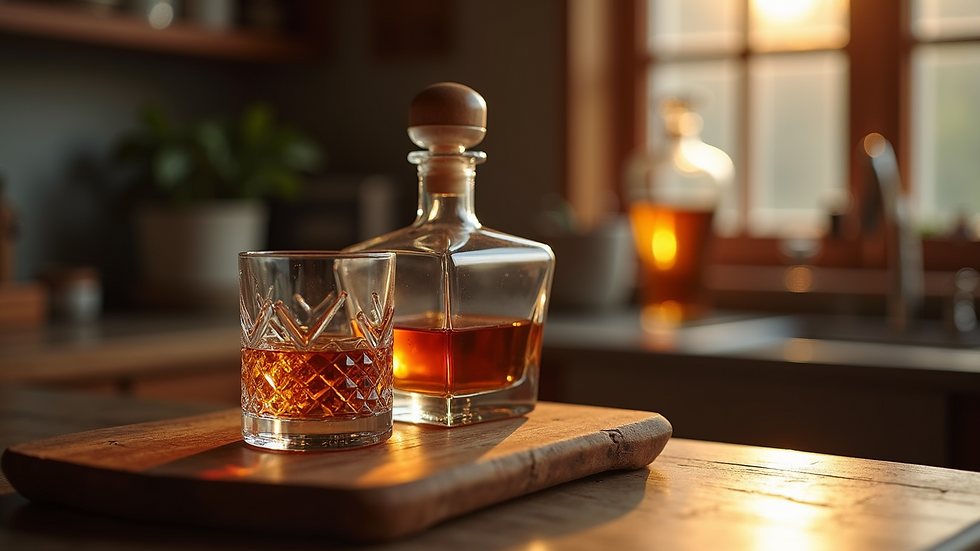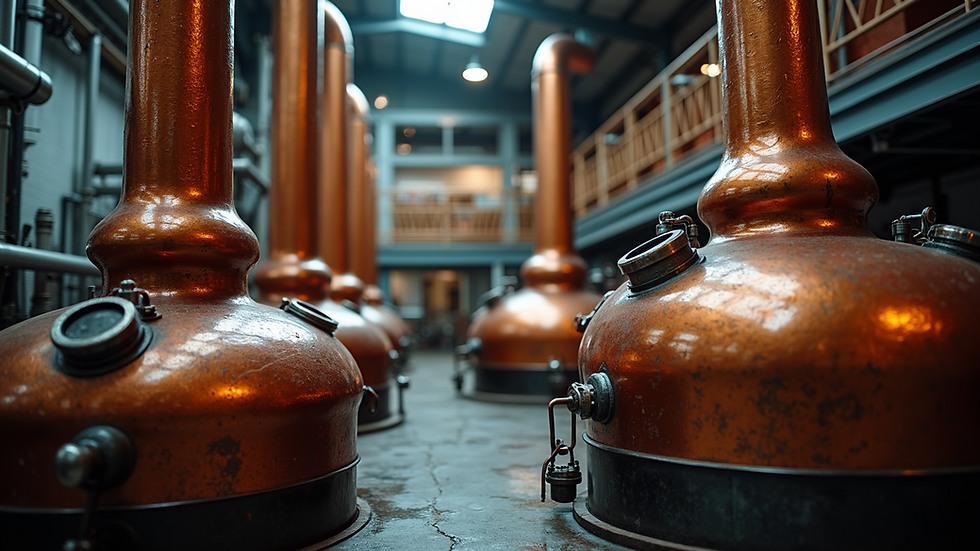The Rise of Premium Spirits in California
- Brandon M.

- Jun 30
- 5 min read
California has long been known for its rich agricultural landscape, producing everything from fresh fruits to renowned wines. However, in recent years, the state has witnessed a significant trend: the rise of premium spirits. This shift is not just a fleeting novelty; it reflects changing consumer preferences, innovative distilling practices, and a commitment to quality craftsmanship.

What Are Premium Spirits?
Premium spirits are defined as high-quality alcoholic beverages that undergo meticulous production processes. Typically, these spirits boast higher alcohol content and are made from superior ingredients. In California, this category encompasses artisanal vodkas, gins, rums, and whiskeys, each crafted with a unique blend of local ingredients and artisanal techniques.
The sharp rise in demand for premium spirits started in the late 2000s. According to the Distilled Spirits Council, premium beverage sales have increased substantially, with a 20% rise in the broader spirits sector. This growth highlights a cultural shift where consumers seek authenticity and superior quality over mass-produced options.

Premium Spirits and Local Distilleries
The burgeoning craft distilling scene in California is a testament to the increasing preference for premium spirits. Many local distilleries have sprung up across the state, focusing on small-batch, handcrafted spirits. These distilleries pride themselves on sourcing ingredients locally, often from California's thriving agricultural sectors.
One standout example is Ventura Spirits, which offers a variety of craft spirits including rum and gin, all produced using local botanicals. Another notable mention is St. George Spirits, known for its handcrafted gin and single malt whiskey, both of which infuse local ingredients to create unique flavor profiles.
These distilleries not only contribute to the local economy but also foster a sense of community and culinary exploration. Consumers can visit tasting rooms, participate in tours, and engage directly with distillers, creating a personal connection to the products.

Trends Influencing the Premium Spirits Market
Several trends are influencing the explosive growth of premium spirits in California:
Health-Conscious Choices: As consumers become more health-conscious, they are gravitating towards premium spirits that are often lower in additives and made from organic ingredients. Brand transparency has become crucial, leading many distilleries to proudly showcase their sourcing practices.
Craft Cocktails: The craft cocktail movement has significantly fueled the premium spirits market. As bars and restaurants focus on innovative cocktail menus, they turn to quality spirits to create unique and flavorful drinks. This has led to increased visibility and demand for premium brands.
Sustainability: More consumers are considering the environmental impact of their purchases. Distilleries embracing sustainable practices — such as utilizing organic ingredients and responsible packaging — are gaining traction among eco-conscious consumers.
Cultural Appreciation: The rise of premium spirits also ties into a broader cultural appreciation for artisanal products. As people become more knowledgeable about the distilling process and flavor profiles, they are more willing to invest in quality spirits.
Education and Experience: In an age where consumers are eager to learn, distilleries are offering tasting events, classes, and workshops. This educational aspect enhances the consumer experience and fosters a deeper appreciation for premium brands.
Challenges Faced by Premium Spirit Producers
Despite the many opportunities in the premium spirits market, producers face several challenges:
Competition: The craft distilling landscape is crowded, and distinguishing oneself can be difficult. As more distilleries open, producers must find unique selling points and innovative marketing strategies.
Regulatory Challenges: Navigating local and federal regulations can be daunting. Each state has its rules concerning distillation, distribution, and sales, which can complicate the operations of small distilleries.
Supply Chain Issues: Sourcing high-quality ingredients can sometimes be a challenge, especially when relying on local farmers and suppliers. Economic downturns can impact availability and pricing, affecting production.
Consumer Education: While there is a growing interest in premium spirits, there is still a need for consumer education regarding the differences between premium and mass-produced options. Distilleries must actively engage in educating consumers to continue driving interest.
The Future of Premium Spirits in California
As the premium spirits market continues to evolve, several future trends are poised to shape its trajectory:
Increased Collaborations: Expect to see more collaborations between distilleries and local chefs or breweries, creating limited-edition spirits that capitalize on innovative flavor pairings.
E-commerce Growth: The pandemic spurred a surge in online shopping, and this trend is likely to persist. Distilleries must invest in e-commerce platforms to reach broader audiences and simplify purchasing processes.
Flavor Innovation: Expect an influx of experimental flavors and infusions. As consumers seek unique experiences, distillers will continue to push the boundaries by incorporating unconventional ingredients, reflecting California's diverse agriculture.
Merchandising and Branding: Distilleries are likely to place increased emphasis on branding and packaging as they compete in a saturated market. Eye-catching designs will play a critical role in attracting consumers.
Legislative Changes: Continued advocacy for favorable legislative changes in the alcohol industry could either hinder or assist the growth of premium spirits. Distilleries must stay informed and involved in policymaking processes.
In this vibrant California market, brands like 31st select spirits provide a diverse selection of premium options, reflecting both the quality and the culture of the state. From innovative distillers to local sourcing, the future of premium spirits in California looks incredibly promising.

Navigating the Premium Spirits Landscape
For the consumer, navigating the world of premium spirits can be exciting yet overwhelming. Here are a few actionable tips to enhance your experience:
Explore Local Distilleries: Visit local distilleries to discover unique offerings and partake in guided tastings. This provides context and enhances appreciation for the spirits you choose.
Get Educated: Take advantage of classes or workshops focused on cocktail creation and spirits. The more you learn, the more you'll enjoy the nuances of different premium spirit offerings.
Seek Quality Over Quantity: Invest in a few high-quality spirits rather than an array of lower-quality options. This will enhance your sipping experience and encourage you to appreciate each drink's unique qualities.
Experiment with Cocktails: Use premium spirits to create craft cocktails at home. This allows you to explore different flavor combinations and expand your palate.
Share Your Experience: Join tasting clubs or online communities to share your discoveries with fellow enthusiasts. Engaging with others fosters camaraderie and introduces you to new recommendations.
The rise of premium spirits in California marks a vibrant shift in consumer preferences and production practices, highlighting the demand for quality and authenticity. By exploring local distilleries, embracing new trends, and advocating for quality craftsmanship, both producers and consumers can contribute to the continued growth of this exciting industry.




Comments